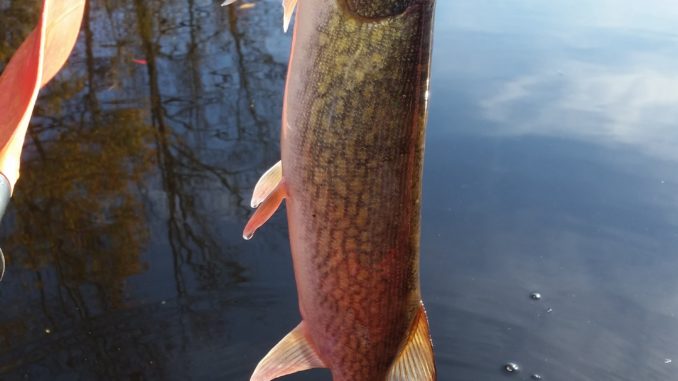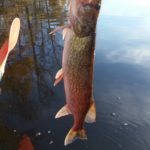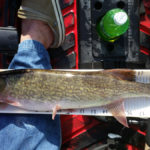
Toothy critters stay shallow,are great targets
Growing up watching TV fishing shows on the weekend was an experience in itself. However, with everyone bass fishing around home, it always seemed strange when anglers would head north and talk of pike and muskie.
There are a few places in North Carolina where the northern pike and muskellunge live, but they are not common; perhaps that is why that type of fishing is not big in North Carolina.
However, for winter fishing, their little cousins are plentiful and can provide an excellent workout. The chain pickerel thrives in the Southeast and inhabits nearly all of North Carolina’s waters.
Also known as the eastern pike, southern pike or jackfish, the one attribute that makes pickerel an easy target during the winter is that it stays aggressive and active in cold water, just like it’s more sought-after kin from the north.
They are also easy to target from the man-powered vessel.
Regardless of the season, chain pickerel thrive around cover. Just like their larger relatives, they are ambush hunters. They prefer to lay back in weeds and other vegetation, behind dock and bridge pilings and other structure, facing open water, and wait for prey to swim by. And when an unsuspecting smaller fish does swim by, the attack is swift and determined.
Shallow waters in depths of 6 to 10 feet are best. Pickerel will eat anything our most-revered freshwater gamefish, the largemouth bass, does. Minnows, or lures resembling minnows, soft plastics and shiny lures — particularly with a bit of bucktail tied in — make great presentations for a hungry chain pickerel.
Paddling just outside the edges of structure and casting down the sides or towards the vegetation line offers the best plan of attack. When they do attack, it is aggressive, and they are known to put up a good fight.
While pickerel are considered a rough fish in most parts of the Southeast, they can provide good table fare, as they are lean an offer a mild flavor — but very bony.
Chain pickerel also have large, hinged jaws and a menacing look with sharp teeth that can tear through monofilament line easily. Also, because of their quick and predatory attacks, they are known to swallow their prey in one gulp. If your hook happens to be attached to their perceived prey, it may be gone or at the very least difficult to retrieve from inside the fish.
Handling the pickerel is easier with a net from a kayak, using a pair of fish-lip grippers to get control of the situation. A pair of sturdy fishing gloves are nice in view of the pickerel’s toothy grin as well.
Fishermen who target pickerel usually tie a wire leader onto the end of 12- to 17-pound test running line, even though adult fish average only 3 pounds. Typical lengths are in the 20- to 24-inch range for mature specimens.
Where more-popular species point anglers to deep waters in winter, pickerel can usually offer a safer paddle around habitat close to the bank, even on the coldest days. In the process, it also keeps you on top of your angling game, with plenty of thrills during what many would consider the offseason.





Be the first to comment